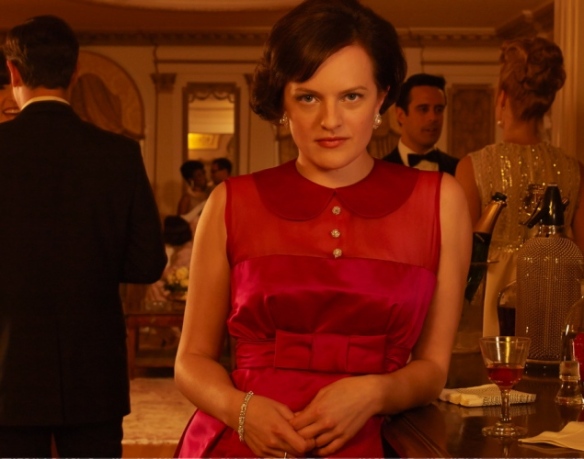Those of us in my generation trace one of our earliest memories to the assassination of President John F. Kennedy. From that moment, we progressed on through a number of other mid-to-late-20th century bloody assassinations, and right into the ongoing carnage of the Vietnam war. In between it all was the civil rights struggle that saw eruptions of street rioting coast to coast. We were raised on violence and mayhem. As children we saw our President shot through the brain. As teens we watched blood and guts in Vietnamese rice paddies every night on Walter Cronkite’s evening newscast. As young adults we were already inundated
 with unnatural acts of horror. By the time we were full adults, the Murrah Federal Building (left) was blown up in Oklahoma City. This time the carnage was the work of a disgruntled American angry at the government for another violent confrontation in Waco, TX two years earlier. And then the road winds around right into 9/11.
with unnatural acts of horror. By the time we were full adults, the Murrah Federal Building (left) was blown up in Oklahoma City. This time the carnage was the work of a disgruntled American angry at the government for another violent confrontation in Waco, TX two years earlier. And then the road winds around right into 9/11.And now…Boston.
The day JFK was murdered, the U.S was about as low-tech as a developed nation could be. When the riots happened late at night in Washington, D.C. and Harlem the night Martin Luther King was murdered, many of us had no idea it was happening until the next day. Vietnam happened on our TV screens, but generally not in real time. Even so many years later when Oklahoma City happened, and later when the planes hit the buildings in NYC, although we watched it happen live on TV, there was not much social media happening and cameras in phones were not widely available yet.
 But Boston? The world is so high tech now that not only did law enforcement rely heavily on private citizens’ phone photos, but the second suspect was caught after a helicopter used infrared imaging technology (right) to determine that he was hiding under a sealed canvas in a boat. Those in the know explained it to us laypeople as technology that senses heat
But Boston? The world is so high tech now that not only did law enforcement rely heavily on private citizens’ phone photos, but the second suspect was caught after a helicopter used infrared imaging technology (right) to determine that he was hiding under a sealed canvas in a boat. Those in the know explained it to us laypeople as technology that senses heatto indicate there is an animal or human being in the targeted region. X-Ray vision, 21st century style. Technology did in the Tsarnaev brothers. As one network reporter put it, the phrase “lost in a crowd” no longer exists in 21st century America. If not technology, what other explanation is there that the Tsarnaev boys were identified and targeted by law enforcement within 24 – 48 hours of the marathon bombings?
But there are other differences between Boston and the history-making violent events through which we have lived. Chief among them may be the fact that Chechnya, a country of just over 1.2 million citizens could be a threat to the mighty USA. It speaks to the undeniable shift in world security that these two boys were able to pull this off. Another meaningful difference between Boston and past violent incidents is the complex fact that although they caught us by surprise with the bombings, we are no longer fully shocked that it could happen. We know now that terrorist attacks can happen anywhere, anytime. Three days after the Boston bombings a bomb threat at the New Orleans Marriott hotel forced its officials to evacuate the entire 41 floors and 1300+ guest rooms. Right here in New Orleans – we’re not a major U.S. center of commerce; we’re not a national government seat; we’re not even a tremendously populated city, compared to our more cosmopolitan sister cities. Yet even we have bomb threats.
The difference between Boston and other events we’ve witnessed is simply that now we know terrorism has no geographical preferences or boundaries. So – we are Boston. And Boston is us. And that “new normal” that you hear bandied about in contemporary vernacular is real. The new normal can be summed up this way: We are not necessarily safe in America. We know that, and we navigate our way through life with that sort of hanging over us each day.
It is still the freest country in the world, but freedom has been somewhat redefined. It now means we are on camera most of the time that we are not at home. It means there is even technology being used that can determine if someone is indeed in their home at any given time. The new normal holds that we Americans are not internationally adored. In many places just the opposite is the case. And the new normal holds that those who would commit violent mass attacks walk right among us. The surviving Tsarnaev brother is described by some of his American high school and college classmates as a great guy, fun, and just “one of us.” So far, to a person they describe someone who they would never have known had it in for Americans.
Those are the necessary lessons of Boston. We are now the United States of Boston. I remember not so many years ago when we were all called upon to be the United States of New Orleans. It was a powerful feeling. The larger lesson I take away from these moments? That would be that unity is our true, best shot at national security.
















